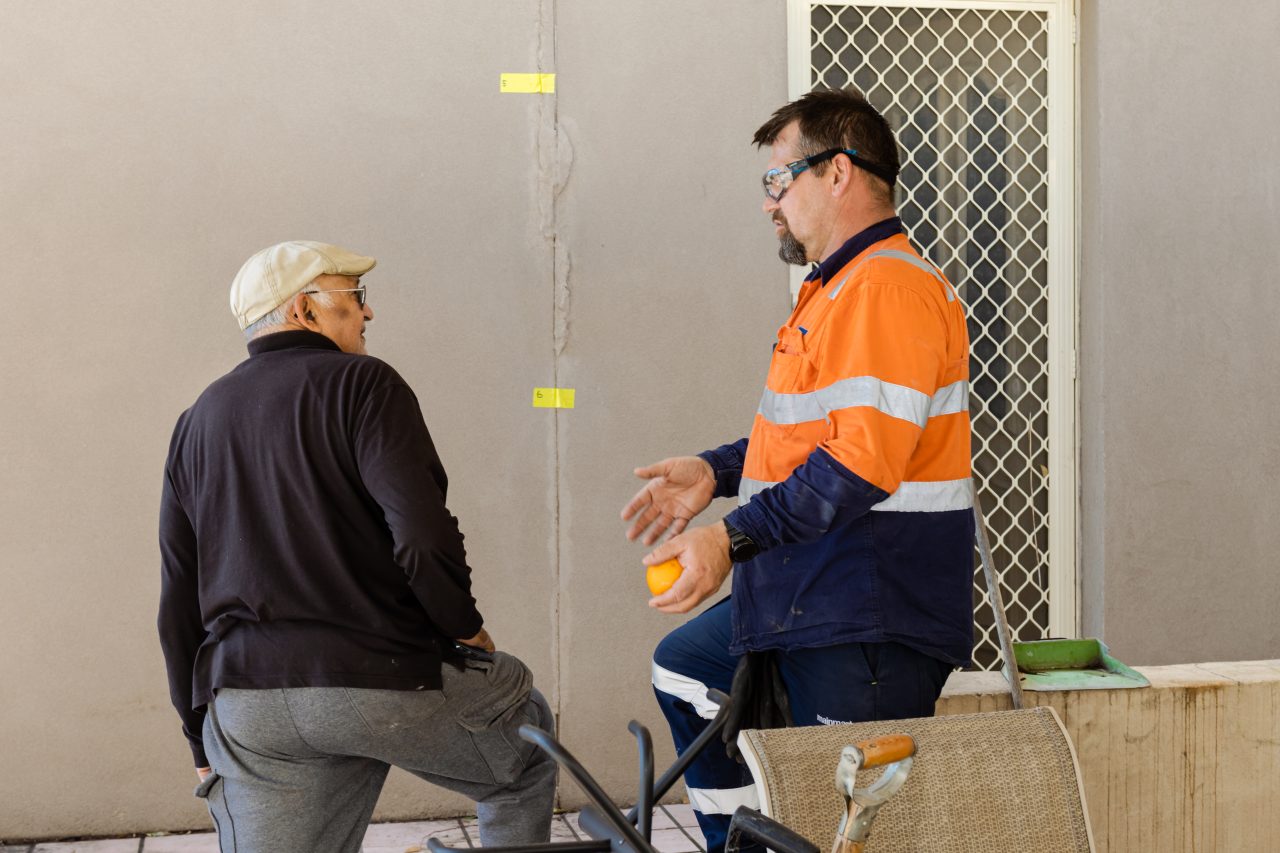Underpinning is a crucial construction process used to reinforce and stabilise an existing building foundation.
Underpinning is a crucial construction process used to reinforce and stabilise an existing building foundation. This method becomes necessary when the original foundation is no longer sufficient to support the structure, which can occur due to various factors such as soil composition changes, construction defects, or external environmental influences. Ensuring the long-term stability and safety of buildings, underpinning is particularly essential for structures experiencing settlement issues, subsidence, or structural deterioration.
Understanding Underpinning
The underpinning process involves strengthening the foundation of an existing building, which can be achieved in several ways. These may include reinforcing the existing foundation, improving the soil conditions by using a resin injection solution, or extending the foundation to distribute the structural load over a broader surface area. The method used depends on the severity of the foundation problem, the nature of the soil, and the building’s specific structural requirements.
Underpinning Australia FAQs
When is Underpinning Required?
Underpinning is required when a building’s foundation becomes unstable or unable to adequately support the structure. There are several common reasons for this, including changes in soil conditions, poor original foundation design, nearby excavation or construction, building modifications, and natural disasters. Over time, the soil beneath a building may shift due to factors such as subsidence, moisture fluctuations, tree root activity, or poor drainage, leading to foundation movement or weakness.
Additionally, if soil properties were not thoroughly assessed during the initial construction phase, the foundation may not have been designed to accommodate site-specific conditions, resulting in long-term instability. Large-scale excavation projects near an existing structure can also disrupt soil composition and compromise foundation support. Furthermore, substantial renovations or the addition of extra storeys can place additional stress on the foundation, necessitating reinforcement to manage the increased structural weight. Natural events such as earthquakes, floods, and droughts can significantly impact soil stability, leading to foundation movement and the need for underpinning.
Mainmark provides underpinning in, Canberra, Hobart, Townsville NSW, QLD, SA, WA, Tasmania, Victoria plus the major cities of Sydney, Melbourne, Perth, Adelaide, Brisbane, Newcastle
Mainmark also provide the following in Australia: wall crack repairs, sinking floor repair, Concrete slab repair, sinking foundation repair, underpinning, ground improvement, re-levelling, subsidence repair, void filling and slab lifting
Key Factors Affecting Foundations
The type of soil beneath a building plays a significant role in determining the stability of its foundation. Some soils, known as reactive soils, undergo substantial volume changes due to variations in moisture content. These fluctuations can cause expansion and contraction, which may compromise the integrity of a building’s foundation.
Types of Building Foundations and Footings
A building’s foundation is composed of both the footing system and the flooring system, working together to ensure structural stability. In residential construction, there are two primary types of flooring systems: slab-on-ground foundations and suspended floors.
Slab-on-ground foundations include raft slabs, waffle pod slabs, reinforced slabs on fill, and slabs with dropped edge beams. Suspended floors, on the other hand, consist of stumps or piers that support timber or steel bearers and joists. Common footing systems include continuous footings, which are concrete strips or slabs that evenly distribute loads, and pad footings, which are square or round concrete pads used to support concentrated loads, often in conjunction with stumps. Other types include stumps made from hollow steel, timber poles, or machined timber posts designed for elevation and stability, as well as piles and piers such as bored piers, driven piles (timber, steel, or concrete), and steel screw piles, which provide deep foundation support.
Why Do Building Foundations Fail?
There are several reasons why building foundations may fail, leading to structural damage and necessitating underpinning. One major factor is reactive soil, which expands, and contracts based on moisture levels. In dry conditions, these soils shrink, causing settlement, while in wet conditions, they swell, leading to heaving. Both of these movements can result in foundation instability and structural cracking.
Poorly compacted fill is another common issue. If fill material was used during construction and not adequately compacted, the foundation may settle unevenly, leading to structural cracks and movement. Additionally, erosion caused by water leaks, poor drainage, or flooding can wash away soil supporting a foundation, causing instability. Buildings constructed on slopes are also susceptible to gradual downhill movement (creep) or sudden landslides, necessitating underpinning for stabilisation. Tree root activity can further contribute to foundation problems, as large trees extract moisture from the soil through transpiration, causing shrinkage and movement.
Methods of Underpinning
There are various methods of underpinning that can be used to address foundation issues, depending on the severity of the problem and the site conditions. One common method is concrete slab underpinning, which involves expanding the foundation using reinforced concrete. Screw pile underpinning is another effective technique, using steel piers combined with concrete footings to provide stable support and lift structures back into position.
Them modern alternative to traditional underpinning is, resin injection, wherein a polyurethane resin is injected into the soil to provide ground improvement and level correction.
Signs You May Need Underpinning
Several telltale signs may indicate the need for underpinning. These include Cracked Walls, particularly if they are widening over time, as they can signify foundation movement. Uneven or sloping floors are another indicator of foundation instability, as are doors and windows that have become misaligned and difficult to open or close. Additionally, if gaps or trenches appear around a building’s foundation, this may be a sign of soil subsidence, requiring professional assessment.
When to Seek Professional Help
If you suspect that your foundation may be compromised, it is essential to consult a professional before the damage worsens. You can contact our engineering experts at 1800 623 312, or you can fill out a quick enquiry form.
Do You Need a Structural Engineer?
A structural engineer can conduct a thorough site analysis to determine the extent of foundation issues and recommend the most suitable underpinning method. Some underpinning companies offer in-house engineering services, streamlining the process for property owners.

The Modern Alternative
Resin Injection Underpinning
Underpinning is a process that strengthens and stabilises the foundation of a building. Traditional underpinning methods involve excavation and the use of concrete to provide additional support. However, Mainmark offers a modern alternative to traditional concrete underpinning through our advanced resin injection technique.
Resin Injection: A Modern Solution for Cracked Walls
Our resin injection underpinning solution is a highly effective method to address foundation issues and cracks in walls. This innovative technique involves injecting resin material into the ground beneath your home or building. As the resin expands, it fills voids, providing ground improvement and level correction to the structure. This method is non-invasive, quick, and causes minimal disruption and to your property.

Contact Us
Expert Assistance for Foundation Issues
If you are uncertain whether underpinning is required for your property, consulting professionals such as Mainmark can provide a comprehensive assessment and expert guidance.
We also provide the following services: wall crack repairs, sinking floor repair, Concrete slab repair, sinking foundation repair, underpinning, ground improvement, re-levelling, subsidence repair, void filling and slab lifting.
Features & Benefits of Resin Injection Underpinning
Mainmark’s Solutions & Technologies

Fast
Our technologies have fast curing times and treated areas can be used immediately or without the delays compared to traditional repair methods.

Environmentally Inert
Our technologies use an inert material that is non-toxic and does not leach into the environment or affect the treated area.

Non-Invasive
Our solutions are of surgical nature compared to traditional methods.

Cost-Effective
Compared to traditional methods, our solutions are more cost-effective, with minimal disruption to the area.
House Underpinning
The traditional method
|
Excavation – Heavy machinery is required to dig large holes to depths often up to 3 metres.
|
|
Soil removal – large quantities of dirt and rock are loaded onto dump trucks and transported away from the site
|
|
Pouring Concrete– filling the holes or “piers” with concrete can be complex and logistically challenging depending on the site.
|
|
Curing time – concrete can take several days to get to strength.
|
House Resin Injection
The modern alternative
|
Tiny holes– Teretek is applied through keyholes, typically 6mm to 16mm in diameter.
|
|
Clean and quiet – The process is clean and quiet, has minimal impact on residents.
|
|
Resin injection – The resin injects into the ground and expands in the ground within minutes.
|
|
Curing time – 30 minutes. You can even use the building during the process.
|
Get a FREE quote
Arrange a site assessment in 3 simple steps:
Step 1
Submit your enquiry using our online form. Include a brief message about the type of foundation issues you are experiencing.
Step 2
Our friendly customer service team will be in touch to schedule a site assessment that suits you.
Step 3
One of the Mainmark experts will visit your home or property, assess the damage, and ascertain the likely cause. They will establish the approach needed, creating a plan specific to the needs of your building and provide you with a detailed quote.

© 2025 The Mainmark group of companies. ‘Mainmark®’, ‘Terefil®’, ‘Terefirm®’ and ‘Teretek®’ are trademarks of the Mainmark group of companies.
Mainmark Ground Engineering Pty Ltd
ABN: 51 606 182 503


































